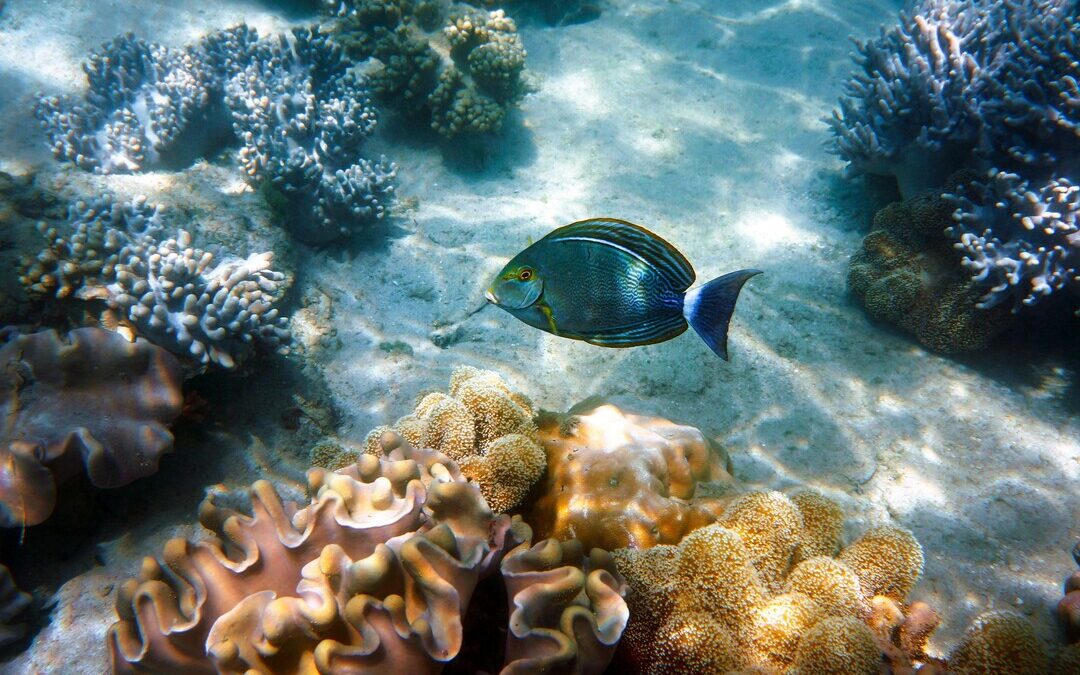Record Heat Triggers Largest Coral Loss in Years on Great Barrier Reef
Australia’s Great Barrier Reef suffers steepest coral decline after 2024 bleaching event wipes out decades of recovery.
The Great Barrier Reef has suffered its steepest annual drop in coral cover in decades after an unprecedented mass bleaching event in 2024 killed vast swaths of coral across all three regions of the world’s largest reef system, according to the Australian Institute of Marine Science.
The decline, detailed in AIMS’ 39th annual Long-Term Monitoring Program report, shows regional coral cover falling by up to 30 percent in the past year, erasing years of recovery and highlighting the accelerating threat of climate-driven heatwaves.
What is Mass Bleaching
Mass coral bleaching occurs when corals expel the microscopic algae, called zooxanthellae, that live in their tissues and provide them with food through photosynthesis.
This happens when water temperatures rise above normal seasonal maxima for prolonged periods, placing the corals under extreme stress.
Without the algae, corals turn stark white, lose their primary energy source and are more vulnerable to disease and death. Recovery depends on the return of favorable conditions, but repeated bleaching events can lead to permanent reef degradation.
Record Heat, Widespread Mortality
The 2024 bleaching was the reef’s fifth mass bleaching since 2016 and part of the fourth global bleaching event declared by the US National Oceanic and Atmospheric Administration in April last year. It had the most significant spatial footprint on record, with high to extreme bleaching in all regions.
Northern reefs saw average hard coral cover plunge from 39.8 percent to 30 percent, the sharpest single-year drop since monitoring began in 1985.
In the south, coral cover fell from 39.9 percent to 26.9 percent, the largest recorded decline for the region. The central section fared better but still dropped 31.9 percent to 28.6 percent.
Fast-growing Acropora corals, which drove a rapid rebound after the 2016–17 bleaching events, were among the worst affected, with some individual reefs losing more than seventy percent of their coral cover.
Multiple Stressors Compound Damage
While tropical cyclones, flooding and crown-of-thorns starfish outbreaks added to the stress, AIMS said bleaching-related mortality was the primary cause of the losses.
The summer of 2024 brought sea-surface temperature anomalies of up to 2.5 degrees Celsius above average, with some southern reefs enduring heat stress levels unprecedented in the reef’s history.
Follow-up surveys showed that bleaching severity was closely tied to coral mortality, particularly in the Lizard Island region in the north and the Capricorn-Bunker group in the south. Some shallow-water habitats experienced near-total bleaching.
Signs of Resilience – but Time is Running Out
Despite the losses, most reefs retained at least ten percent coral cover, and a handful still had more than seventy-five percent. The Great Barrier Reef continues to hold more live coral than many reefs globally, partly because it entered the bleaching event with record-high cover and benefits from its size and varied habitats.
However, AIMS warned that recovery windows are shrinking. Mass bleaching events, once rare, have become biennial over the past decade and could soon occur annually. Combined with cyclones, starfish predation and poor water quality, the pressure leaves little time for corals to regenerate.
Calls for Action
Scientists say reducing greenhouse gas emissions remains critical to halting the warming trend, while local management – including targeted crown-of-thorns starfish control – can help protect surviving corals and support recovery.
“Reefs dominated by fast-growing corals can appear to recover quickly, but as we’ve seen this year, those gains can be reversed in a single summer,” said AIMS Long-Term Monitoring Program leader Mike Emslie. “The frequency and severity of marine heatwaves are pushing the reef into uncharted territory.”
Nirmal Menon
Related posts

Subscribe
Error: Contact form not found.


